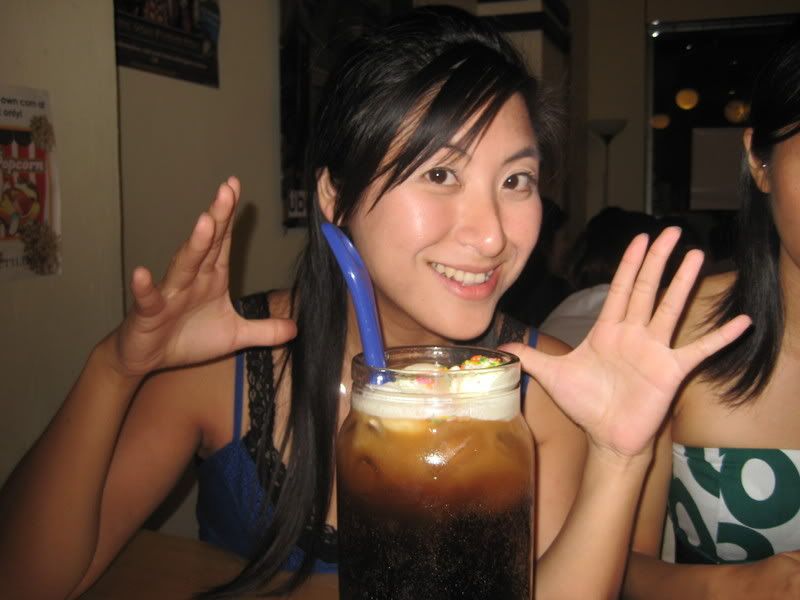Saturday, February 07, 2009
In this blog post, I'll be discussing about the Past & Present of modes, logics and affordances.
The modes available in the past were dominated by writing and later, images. However, with the advent of technology, the modes of representation are no longer restricted to the two. Instead, different forms of modes started coming up and in some domains, even took over the traditional written forms to create new affordances. Example, videos, digital media etc.
The two modes, namely, writing and images, have different materialities and are governed by distinctlogics.
Writing, which is a time-based mode, is governed by the logic of time. This means that meaning is made temporally.
Images on the other hand, is a space-based mode and it is governed by the logic of space. As such, meaning is made based on the placement of elements in the space of representation.
The possibilities that each mode of representation brings about in meaning making are very limited and they are definitely not able to satisfy the new age demands for creativity and innovations. Therefore, the future of literacy requests for:
- a mix of modes to perform complementary functions (multimodal)
- and increased forms of modes to provide new affordances
Examples of multimodality in typography:
In the case of the following pictures, it shows how literacy is combined with illustration to result in typography. The combination of the two modes forms a single communicative act, with the two modes complementing each other. The words in the two pictures ('man', 'parachute', 'woman' and 'car') were illustrated in such a way to reflect their meanings. The font styles and colours of the words were cleverly utilised to reflect the supposedly stronger physique of men, a more delicate image of women. The word 'parachute' was arched to represent the canopy while the word 'car' had the letter 'A' made bigger to represent the middle part of a car. The red coloured 'car' gives the connotation of bring very fast, like a sports car. This was shown in the animation when the car zoomed into the screen.
In the case of the following pictures, it shows how literacy is combined with illustration to result in typography. The combination of the two modes forms a single communicative act, with the two modes complementing each other. The words in the two pictures ('man', 'parachute', 'woman' and 'car') were illustrated in such a way to reflect their meanings. The font styles and colours of the words were cleverly utilised to reflect the supposedly stronger physique of men, a more delicate image of women. The word 'parachute' was arched to represent the canopy while the word 'car' had the letter 'A' made bigger to represent the middle part of a car. The red coloured 'car' gives the connotation of bring very fast, like a sports car. This was shown in the animation when the car zoomed into the screen.


As a result, the functional specialisation of modes may change accordingly as one may discover better ways of representing certain things.
Some examples are:
- The shift from books to electronic books (book-->screen), which results in knowledge and information being easily available for access any time and anywhere
- The increased use of visuals in newspapers to enhance its visual appeal
This is how the Straits Times look like in 1845.

This is how the Straits Times looks like in the present day after 164 years!


_____________________________________
In the process of making meaning in different modes, we are effectively doing semiotic work and it was clearly pointed out in class that not only semioticians do semiotic work, even ordinary students like us do them too!
After reading Kress' article, I came up with a flow chart based on my understanding of how communication takes place through articulation (outwardly made signs) and interpretation (inwardly made signs), where articulation can refer to writing or speech and interpretation can refer to reading.

Note: The word 'Signified' comes from Ferdinand de Saussure's Semiotics school of thought while 'Interpretant' orginates from Charles Sanders Peirce. Both school of thoughts are rather different in that the former believes that signs are arbitrary to their forms and meanings while the latter believes that there is a relation between the signs and what they represent.
However, Kress rejects the idea of arbitrariness as he believes that there must be a reason for choosing a particular sign to represent a particular thing.
For example, below are some children's drawings. Similar to Kress' example of a car wheel, the two children had used lines to represent the various forms of transport. It seems that lines were chosen due to its 'aptness' in expressing what is to be signified. As Kress had mentioned, "The shape of the signifier (in this case, lines) offers itself in its material 'shape' as an expression for that which is to be signified (firetruck/shuttle/aeroplane)
Drawings of a firetruck and a shuttle

Drawing of an aeroplane

Labels: Gunther Kress The Futures of Literacy article response
8:02 AM
